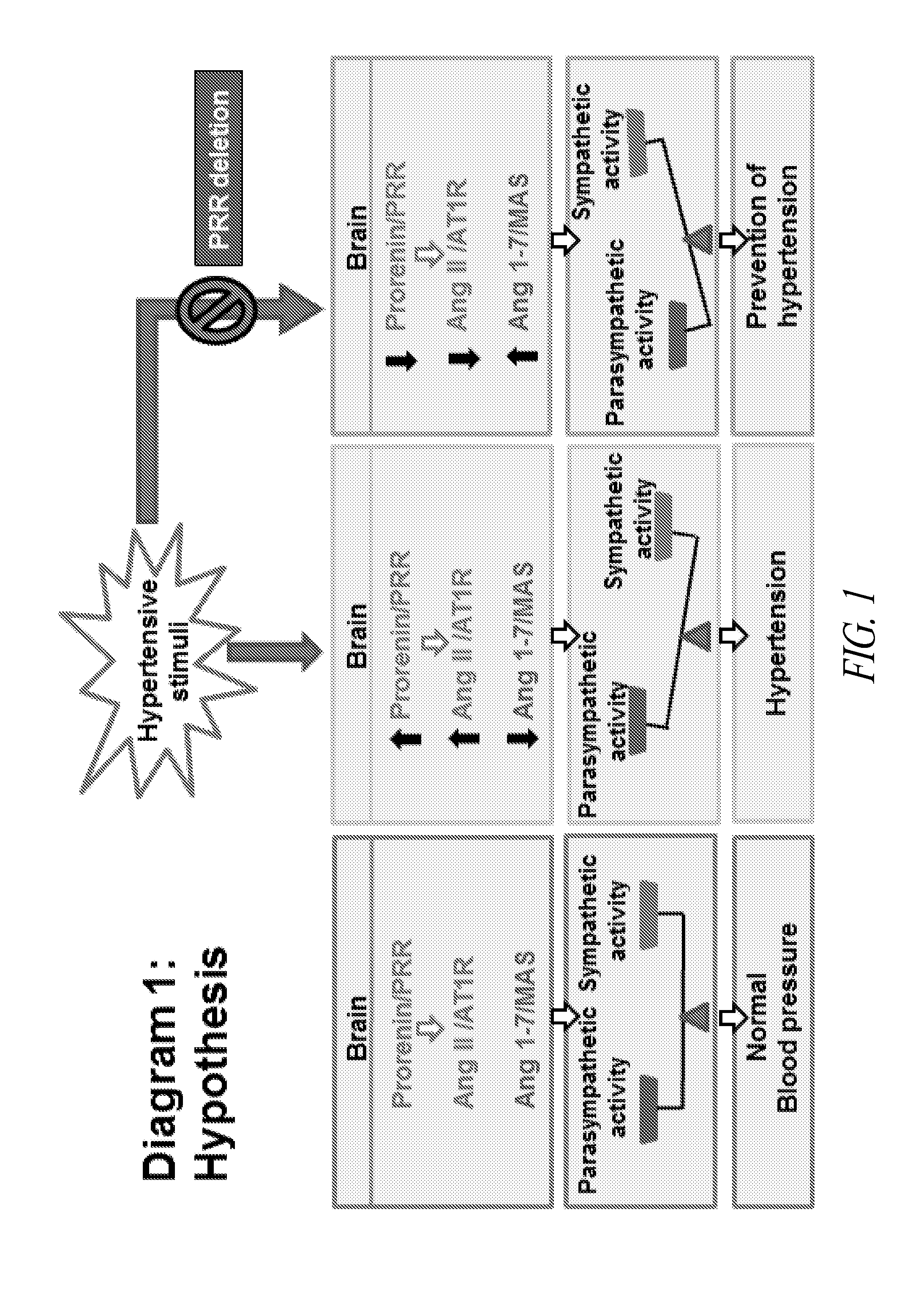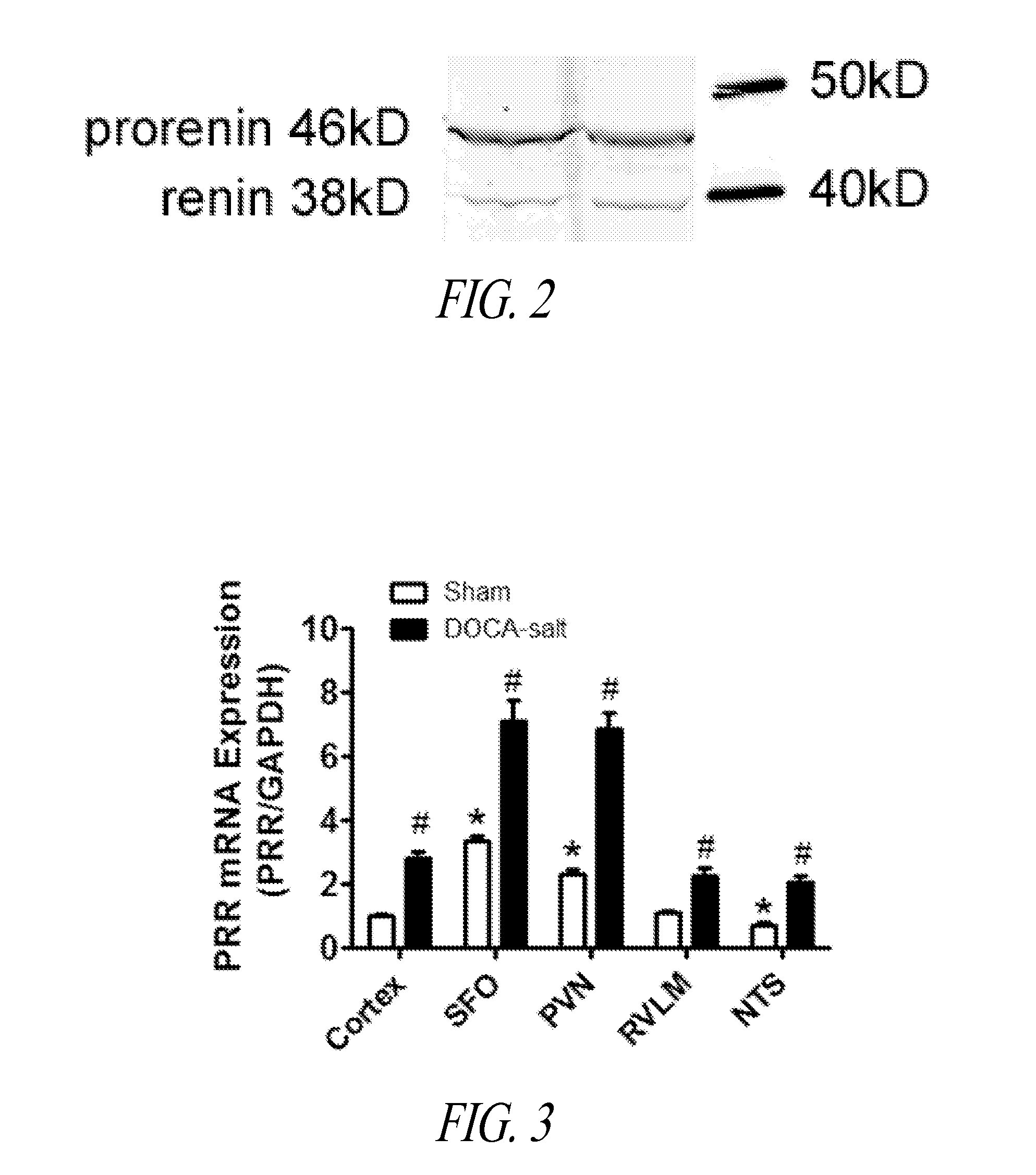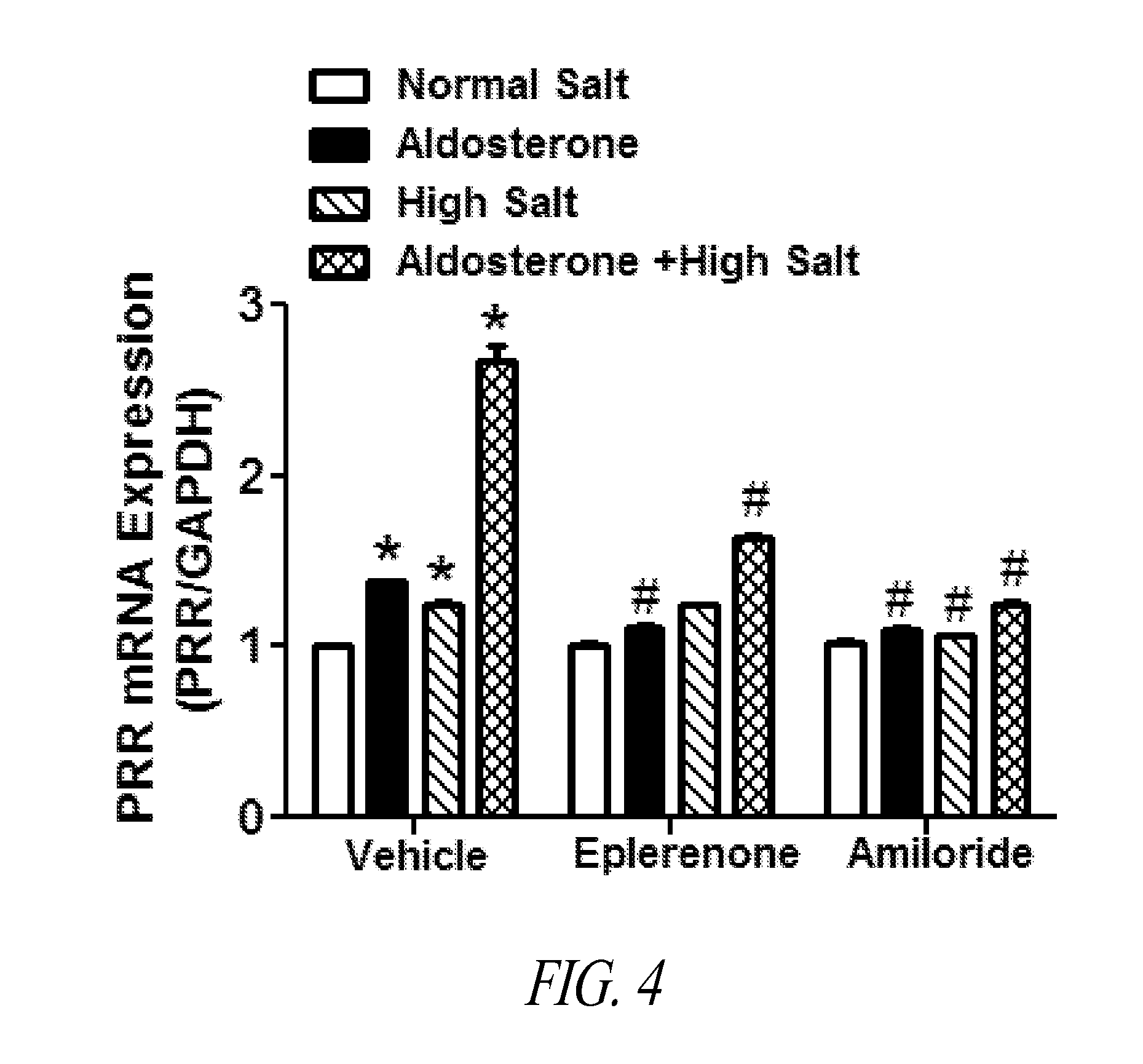Antagonist for (PRO)renin receptor for the treatment of hypertension and diabetes
a renin receptor and anti-receptor technology, applied in the field of (pro) renin receptor antagonists, can solve the problems of dramatic increase of plasma renin levels, difficult to manage blood pressure of about 40% of patients, and the effects of these peptides remain controversial, so as to prevent ang ii-dependent signal activation and reduce ang-ii generation
- Summary
- Abstract
- Description
- Claims
- Application Information
AI Technical Summary
Benefits of technology
Problems solved by technology
Method used
Image
Examples
example 1
Deletion of PRR in the Brain Mitigates Hypertension
[0079]Neuron-specific PRR knockout mice (Nefh-PRR) and wildtype (WT) littermates (N=5 / group) were each implanted with a telemetric probe for blood pressure (BP) recording and an intracerebroventricular (ICV) cannula for infusion of mouse prorenin (100 ng / ul), mouse renin (100 ng / ul), or an Ang II type 1 receptor (AT1R) blocker (losartan, 10 ug / ul) at 0.3 ul / minute for 10 minutes. Mouse prorenin infusion increased the BP (mmHg) in WT mice (ΔMAP: 41±5); however, the prorenin induced pressor response was abolished in Nefh-PRR mice (ΔMAP: 5±1). Infusion of mouse renin similarly increased BP in Nefh-PRR (ΔMAP: 27±2) and WT (ΔMAP: 31±5) mice. The pressor response induced by prorenin or renin was completely blocked by the infusion of losartan. The data suggest that ICV prorenin, via PRR, mediates Ang II-dependent pressor response in WT mice.
[0080]To determine whether PRR contributes to the development of brain RAS-dependent hypertension, N...
example 2
Blocking PRR Improves Baroreflex Sensitivity and Autonomic Function and is Linked to the Attenuation of DOCA-Salt Hypertension
[0082]Elevated expression and activity of RAS components in the brain CV control regions support the concept that the brain RAS is involved in the pathogenesis of hypertension, including DOCA-salt hypertension. PRR participates in Ang II generation, triggering both Ang II-dependent and -independent activation of signaling pathways, and plays a significant role in regulating CV function. Accordingly, decreasing PRR expression in CV regulatory nuclei will reduce Ang II generation and / or decrease Ang II-independent signals, resulting in vasodilation and reduction of BP.
[0083]A conditional PRR knockout mouse model with deletion of PRR specifically in neurons was generated and characterized. The mouse PRR exon 2 gene was deleted by breeding PRR floxed mice with mice that express Cre recombinase under the control of the neuron-specific neurofilament-H (Nefh) promot...
example 3
Delineating the Autonomic Mechanisms and CV Consequences of Brain-Targeted PRR Deletion in the Development of DOCA-Salt Hypertension
[0087]The Nefh-PRR and WT mice are implanted with telemetric transmitters and receive DOCA-salt, high salt only, or sham treatment as described above. Spontaneous baroreflex sensitivity (SBRS), cardiac, and vasomotor sympathetic tone are assessed as described previously (see, e.g., Li W, et al. Brain-targeted (pro)renin receptor knockdown attenuates angiotensin ii-dependent hypertension. Hypertension. 2012, 59:1188-1194; which is hereby incorporated by reference in its entirety). The SBRS is calculated at four different time points (0, 7, 14, and 21 days) without additional animals needed using the sequence method (Hemolab software). In addition, baroreflex reflex sensitivity (BRS) is assessed using a pharmacological method consisting of infusion of sodium nitroprusside (5 μg / min, iv) and phenylephrine (50 ng / min iv) to decrease and increase BP respecti...
PUM
| Property | Measurement | Unit |
|---|---|---|
| pharmaceutical composition | aaaaa | aaaaa |
| blood pressure | aaaaa | aaaaa |
| stability | aaaaa | aaaaa |
Abstract
Description
Claims
Application Information
 Login to View More
Login to View More - R&D
- Intellectual Property
- Life Sciences
- Materials
- Tech Scout
- Unparalleled Data Quality
- Higher Quality Content
- 60% Fewer Hallucinations
Browse by: Latest US Patents, China's latest patents, Technical Efficacy Thesaurus, Application Domain, Technology Topic, Popular Technical Reports.
© 2025 PatSnap. All rights reserved.Legal|Privacy policy|Modern Slavery Act Transparency Statement|Sitemap|About US| Contact US: help@patsnap.com



